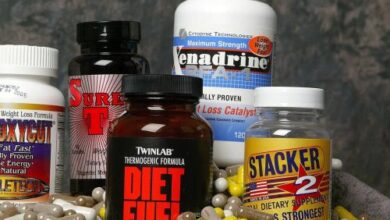Unlocking Ultimate Physical Wellness: 5 Expert Tips for a Vibrant Life

Revitalize Your Life with 5 Pro Tips! Discover Ultimate Physical Wellness Now. Boost Energy, Vitality & Joy! Unleash Your Best Self.
Introduction
In today’s fast-paced world, achieving and maintaining physical wellness has become a crucial aspect of leading a vibrant life. The journey to optimal well-being might seem daunting, but with the right knowledge and approach, anyone can unlock the path to a healthier and happier life. In this article, we’ll explore five expert tips that encompass Exercise Routines, adopting a healthy lifestyle, enhancing cardiovascular fitness, embracing strength training, and incorporating essential nutrition tips. Let’s dive in and discover the secrets to a truly fulfilling life.
Physical wellness is the cornerstone of a Vibrant Life. It goes beyond mere appearances and dives deep into the holistic well-being of an individual. In this article, we’ll delve into expert tips that can help you unlock the ultimate level of physical wellness, guiding you towards a healthier, happier, and more energized life.
The Importance of Physical Wellness
Physical wellness encompasses various facets, including fitness, nutrition, sleep, stress management, and cardiovascular health. It’s about creating a harmonious balance between these aspects to ensure your body functions optimally. When you prioritize physical wellness, you invest in a higher quality of life, improved mental clarity, and increased vitality.
Fitness: More Than Just Appearance
Physical fitness is not solely about having a toned physique. It’s about having the strength, endurance, and flexibility to engage in daily activities with ease. Regular exercise not only helps maintain a healthy weight but also boosts mood, reduces the risk of chronic diseases, and promotes better sleep.
Expert Tips for Optimal Physical Wellness
1. Prioritize Regular Exercise
Engaging in consistent physical activity is crucial for overall wellness. Incorporate a mix of cardiovascular exercises, strength training, and flexibility exercises into your routine. Aim for at least 150 minutes of moderate-intensity aerobic activity or 75 minutes of vigorous-intensity aerobic activity every week.
2. Adopt a Nutrient-Rich Diet
Fuel your body with the right nutrients by consuming a well-balanced diet rich in fruits, vegetables, lean proteins, whole grains, and healthy fats. Avoid excessive consumption of processed foods, sugary snacks, and sugary drinks. Portion control is key to maintaining a healthy weight and preventing overeating.
3. Ensure Adequate Sleep
Sleep is essential for physical recovery and mental rejuvenation. Aim for 7-9 hours of quality sleep per night. Create a sleep-conducive environment by keeping your bedroom dark, quiet, and cool. Limit screen time before bed and establish a relaxing pre-sleep routine.
4. Manage Stress Effectively
Chronic stress can take a toll on your physical well-being. Practice stress-reduction techniques such as deep breathing, meditation, yoga, or engaging in hobbies you enjoy. Regularly disconnect from electronic devices to give your mind a break.
5. Stay Hydrated
Water is fundamental for various bodily functions. Aim to drink at least 8 glasses (about 2 liters) of water daily. Adjust your intake based on your activity level, climate, and individual needs.
Building Cardiovascular Fitness
Cardiovascular fitness is a cornerstone of physical wellness. Engaging in aerobic exercises like brisk walking, jogging, cycling, or swimming strengthens your heart and improves circulation. Aim for 150 minutes of moderate-intensity aerobic activity or 75 minutes of vigorous-intensity aerobic activity per week.
Embracing a Healthy Lifestyle
Achieving ultimate physical wellness requires embracing a holistic healthy lifestyle. Prioritize self-care, maintain strong social connections, and cultivate positive habits that contribute to your well-being. Remember, small changes can have a significant impact over time.
Herbal Products for Fitness: Unveiling the Natural Path to a Healthier You
Herbal products for Health Fitness have been used for centuries to promote health and vitality. When it comes to fitness, these natural wonders offer a holistic approach to achieving your wellness goals. With the right blend of herbs, you can harness the power of nature to support various aspects of your fitness journey.
The Benefits of Herbal Products for Fitness
1. Enhanced Energy Levels
Certain herbal supplements, such as ginseng and maca root, are known for their ability to boost energy and combat fatigue. By integrating these products into your routine, you can experience improved stamina and endurance during workouts.
2. Muscle Recovery and Growth
Herbal products for Health Diseases like turmeric and ginger possess anti-inflammatory properties that aid in muscle recovery after intense exercise. They also contribute to muscle growth, helping you achieve your desired physique.
3. Metabolism and Weight Management
Managing weight is a common fitness goal, and herbal products can play a supportive role. Green tea extract and garcinia cambogia are renowned for their metabolism-boosting properties, making weight management more attainable.
Unlocking ultimate physical wellness is a journey that requires commitment, dedication, and informed choices. By following these expert tips and embracing a holistic approach to wellness, you can pave the way for a life filled with vitality, energy, and a strong sense of well-being.





